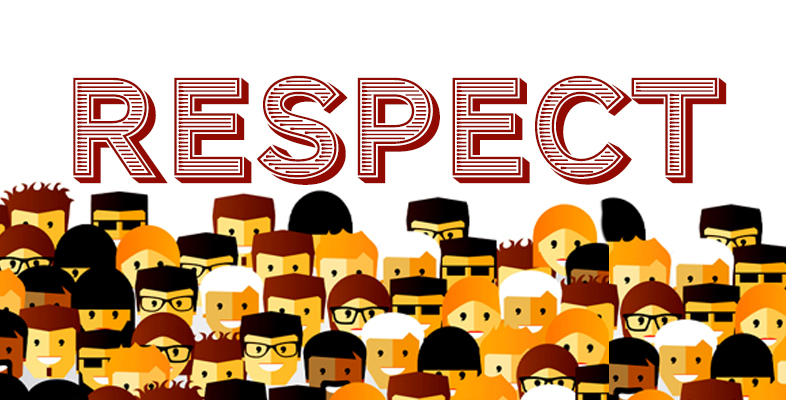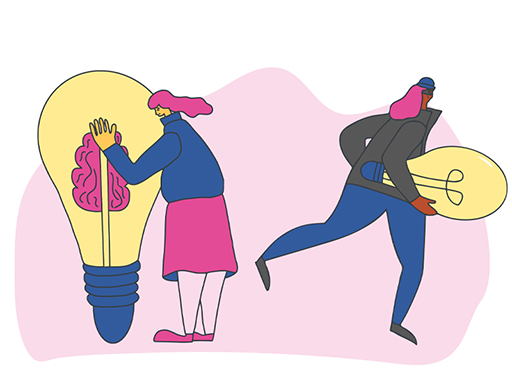4 Showing respect in dissemination
Plagiarism is:
an act or instance of using or closely imitating the language and thoughts of another author without authorization and the representation of that author's work as one's own, as by not crediting the original author.
There are different forms of plagiarism:
- direct plagiarism – when words are copied verbatim without being included in quotation marks
- mosaic plagiarism – when passages are paraphrased, have some words replaced and include another person’s ideas without using either quotation marks or indicating the source of the passage/idea
- self-plagiarism – using your own previously submitted writing (for example on courses) without acknowledging that it has been submitted before. This particularly applies to writing which has a digital footprint and can be found to have been used before. You should cite your own work to show the source. This helps a reader work out what is new in your current writing.
All authors have a responsibility to avoid plagiarism. This is not confined to research contexts; it is considered part of academic integrity.
Activity 7 Avoiding plagiarism
Watch the 2 minute 20 second video Avoiding plagiarism [Tip: hold Ctrl and click a link to open it in a new tab. (Hide tip)] (open the link in a new tab/window).
Think about:
- why authors might be tempted to plagiarise
- how authors might plagiarise without intending to
- how the principles of plagiarism apply to collecting data from people and the respect needed to attribute the contributions of others
- the tension between anonymisation to protect the privacy of others and the right of others to have their ideas, words and content acknowledged.
Discussion
As you saw in the video, plagiarism is an issue to be avoided at all times when writing reports that refer to other people’s work. Even in this course, you will have seen there are clear indications of the sources of the images, quotations and ideas summarised in reference lists and acknowledgements for each session.
In a research context, when a researcher submits their research paper to a journal to be considered for publication, the paper reviewers are asked to check that there is no evidence of plagiarism before making a decision to accept the paper. If a researcher submits their research report to a university, assessors will also review the originality of the work and any suspected plagiarism will be challenged, possibly leading to a case of academic misconduct being placed on the researcher. As you saw in Activity 1, charges of plagiarism can be brought after publication, and papers can be withdrawn from the public domain or research qualifications taken away.
As you saw briefly in Session 3, rights to copyright might also relate to data used in a research study and these need to be weighed against participants’ rights to privacy. Participants might want to waive their rights to privacy and have their work acknowledged. This might be particularly relevant to check when data come from digital sources, where those who have posted data have chosen consciously to have a voice. However, it should not be assumed that this is the case as, if a researcher plans to use online data, this was not something that the original author(s) could have anticipated and they might not want to make this available with attribution. In these situations, a researcher can offer pseudonyms to authors for extracted quotes.
Activity 8 Boastfulness, humility and timidity
Think about the following fictionalised statements from researchers’ reports and how virtuous they can be considered to be. Match each statement with one of the virtues or vices listed below.
- Boastfulness
- Humility
- Timidity
- Dogmatism
- Reflexivity
- Indecisiveness
Using the following two lists, match each numbered item with the correct letter.
-
My study was confusing as some of the findings pointed to one conclusion but others contradicted this.
-
My study was carried out as I planned and my decisions during planning were all justifiable.
-
This study tentatively challenges accepted thinking about this topic by providing evidence which offers an alternative view.
-
This study has not been able to use some of the data collected because it was difficult to analyse.
-
My study makes a major contribution to national policy by identifying some key recommendations which need to be acted on.
-
There are limitations to this study which I became aware of and, if I was undertaking this kind of study again, I have some advice on what I would do differently.
a.Dogmatism
b.Timidity
c.Boastfulness
d.Humility
e.Reflexivity
f.Indecisiveness
- 1 = f
- 2 = a
- 3 = d
- 4 = b
- 5 = c
- 6 = e
Disseminating research is the vehicle for sharing the learning the researcher has gained. In it, the researcher answers their research questions, states which hypotheses can be supported and which cannot, and outlines new questions which arise from surprising findings. There are also likely to be new understandings of how to collect and make sense of data, and new appreciations of how to behave as an ethical researcher which can also be disseminated.

